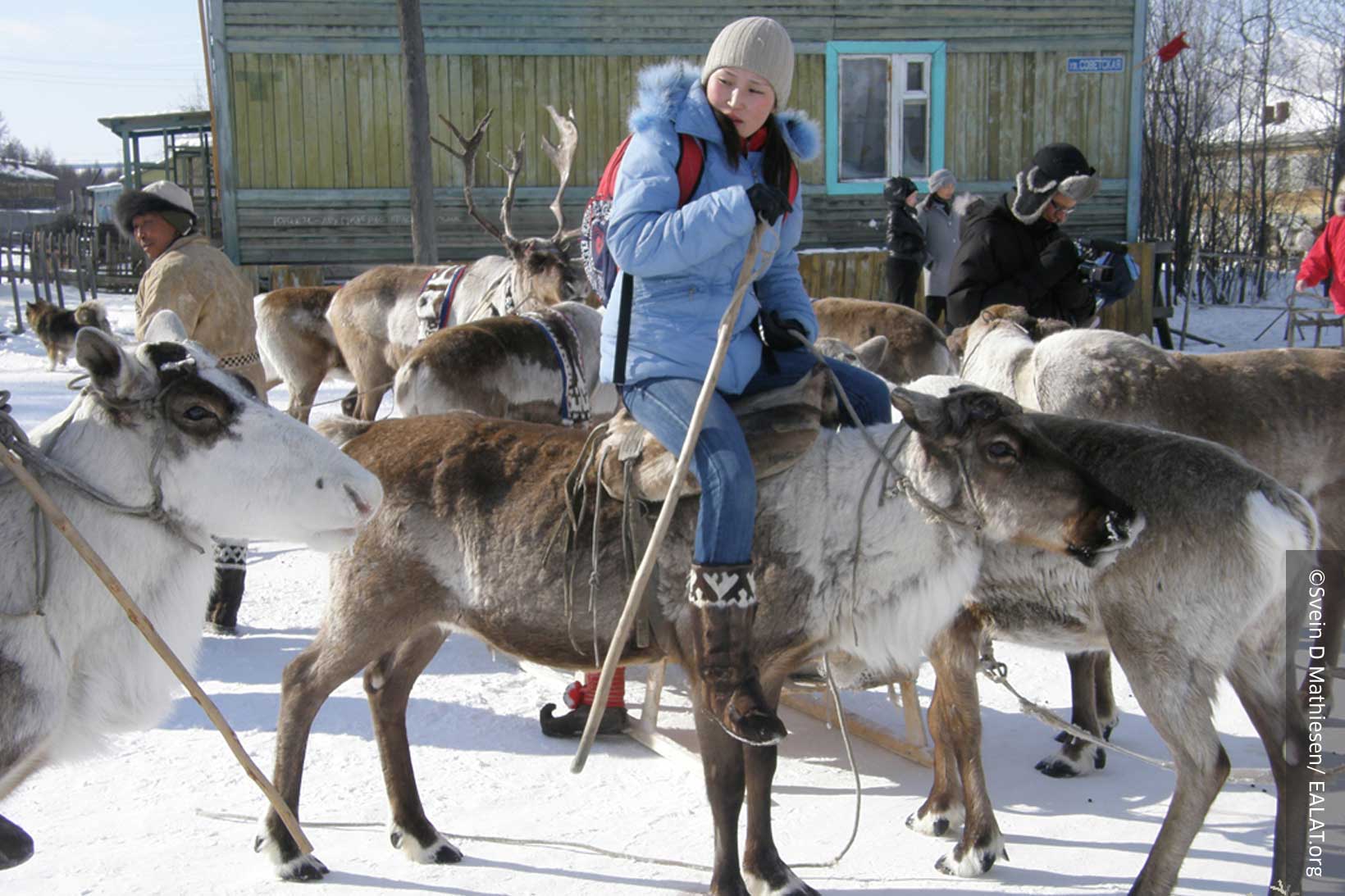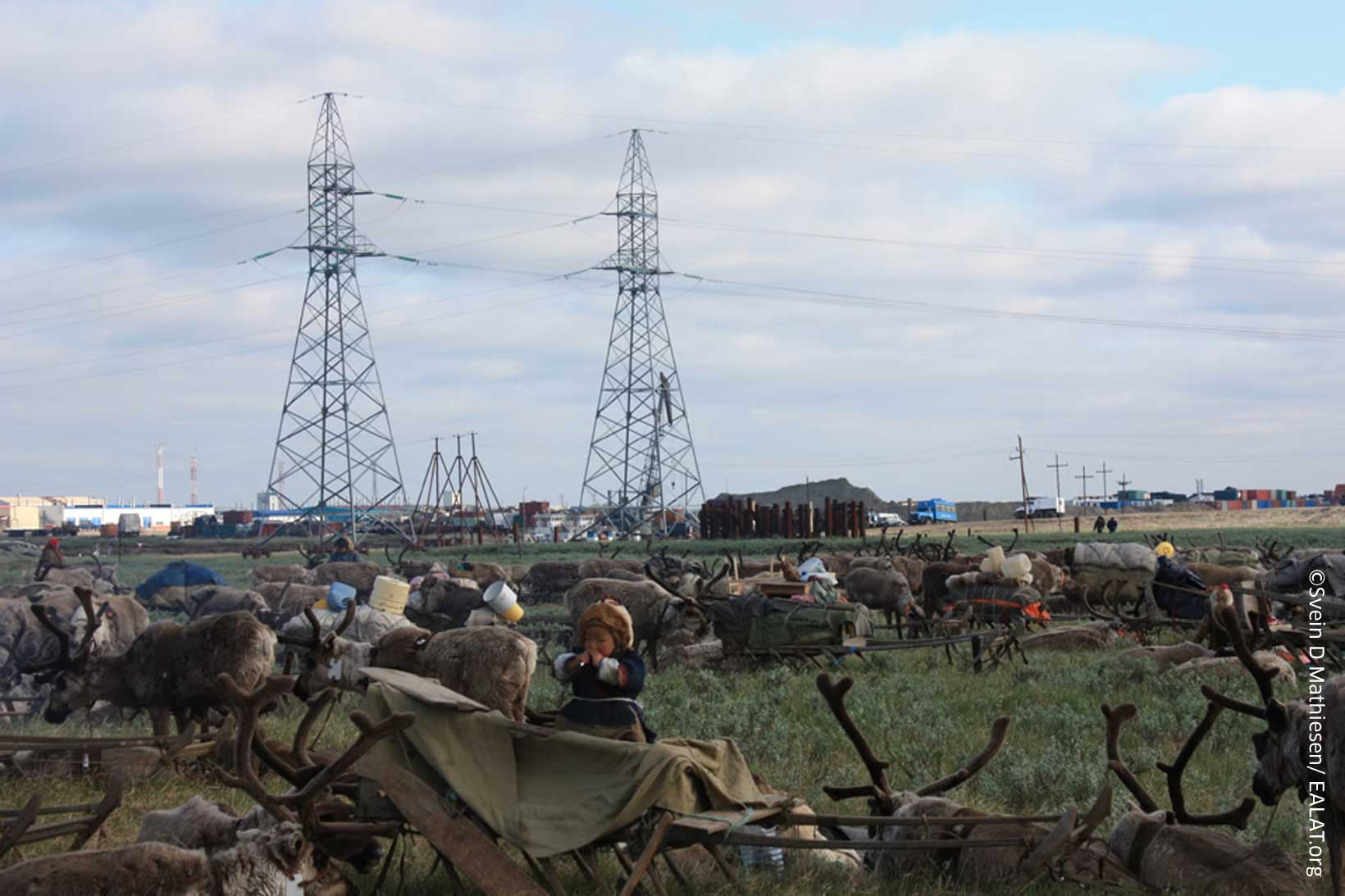For thousands of years the people who live in the Arctic have lived off the land in a form of subsistence husbandry. There is little opportunity for growing crops in the Arctic so people live on the animals they can domesticate or those they hunt. They use these resources to their utmost.


Moving with the reindeer in the winter


Subsistence husbandry
This type of animal husbandry is practiced by 100,000 people across nine nation states. This allows people to utilize the fragile northern and mountain ecosystems in the most sustainable manner possible. Reindeer husbandry can be divided into two types.
- Tundra husbandry refers to the longer type migration practiced during the summer to the coast to avoid the attentions of biting insects. Meat production is the main aim of this practice. Indigenous peoples currently involved in this type of husbandry include the Sami, Nenets, Komi, Eveny, Chukchi and Koryak.
- The taiga on the other hand is more geographically restricted in its migrations with the animals being primarily used for transportation and milk production.
Both methods nowadays utilize the reindeer for meat, handicrafts, skins and herbal medicine.
Interview with a reindeer herder
Interview by Raymond Molony FRGS with Ole-Ante Ture, reindeer herder
Raymond: What is the positive side of being a reindeer herder?
Ole-Ante Turei: There are a lot of positive sides of being a reindeer herder and one thing is time and the absence of the time you see on the watch. Of course there are things, we move when the reindeer move, then we are working, and the things which are actually deciding when we are going and working instead. The changing of seasons is one and the changing of pastures, like going when it is winter and we are migrating to the winter land and despite if it is cold in Ole-Ante Turei, at -30 Celsius it is great to be outside and working with the reindeer and not driven by them. You have to be there at 8.00 o’clock, 9 o’clock when it is getting darker or getting lighter, those are the two main things. And in summer when it is getting lighter we migrate them back to the summer pasture areas on the coast and even though it is a hard migration and it is hard working in the mountains because we walk and work with fences you have that freedom in there you see the world, your own world, To see the lakes, the reindeer and sometimes you actually meet other people. One thing is the lack of clock time, that is one of the big positive things I will say about reindeer herding, so yeah.
Raymond: Can you talk about modern technology you use today or would like to use in the future to help with reindeer herding?
Ole-Ante Ture: Yeah, we used to say that it was the Sami who invented the skis and the first ones to throw them away when the snowmobile came. And it is the same today, when the machines started coming we used motorbikes, all-terrain vehicles and snowmobiles. Now we use helicopters and are moving over to use drones actually also. We use the drones to manage the herd and to control the herd because one positive thing about drones is that you can film the reindeer so you can identify if there are some reindeer you didn’t see in a small flock or a small herd, you can identify them later in the film and say that is the one reindeer I was missing because I didn’t see it. We are always adapting or trying to adapt and make it easier for us. All the time we used skis or walked it is taking a lot of time, you don’t go as fast and also it is heavy work and we try to reduce the load so that is why we use technology. GPS on the collars of the reindeer to see where they are and computers and iPads, these are things we actually use today we are not so much old fashioned people any more, we are modern people, but still our work depends on nature, the herding is pastoral. It is nature which decides but with new technology involved.
Raymond: Could you tell me any negative things about being a reindeer herder and any problems you will face in the future?
Ole-Ante Ture: Yeah there are negative things and times are changing and they are changing fast, it is due to climate and development. One big issue is that you must always try to defend your limits and people are trying to develop things like mining in our area, they try to take away our pasture area. They do it because a big society like Norwegian State of Swedish State they do it so that they can get money for their own State. We are then like a burden for their own State or Local Societies who are not Samis. They see us a burden because we say ‘No we don’t want that development’. Then we always have to defend our opinions, that is one thing. The other thing is that we also lose the possibility to have a sustainable economics with the reindeer. We have that, but when we lose grazing land we have to reduce the number of reindeer also and then the number of herders and it is a bad thing, bad spiral, because in the end what is left? Fewer reindeer herders in a small land and that is not consistent with many States. They have to acknowledge indigenous people and reindeer herders are indigenous people and if there are so few left the culture will not sustain, we have to look at this also.